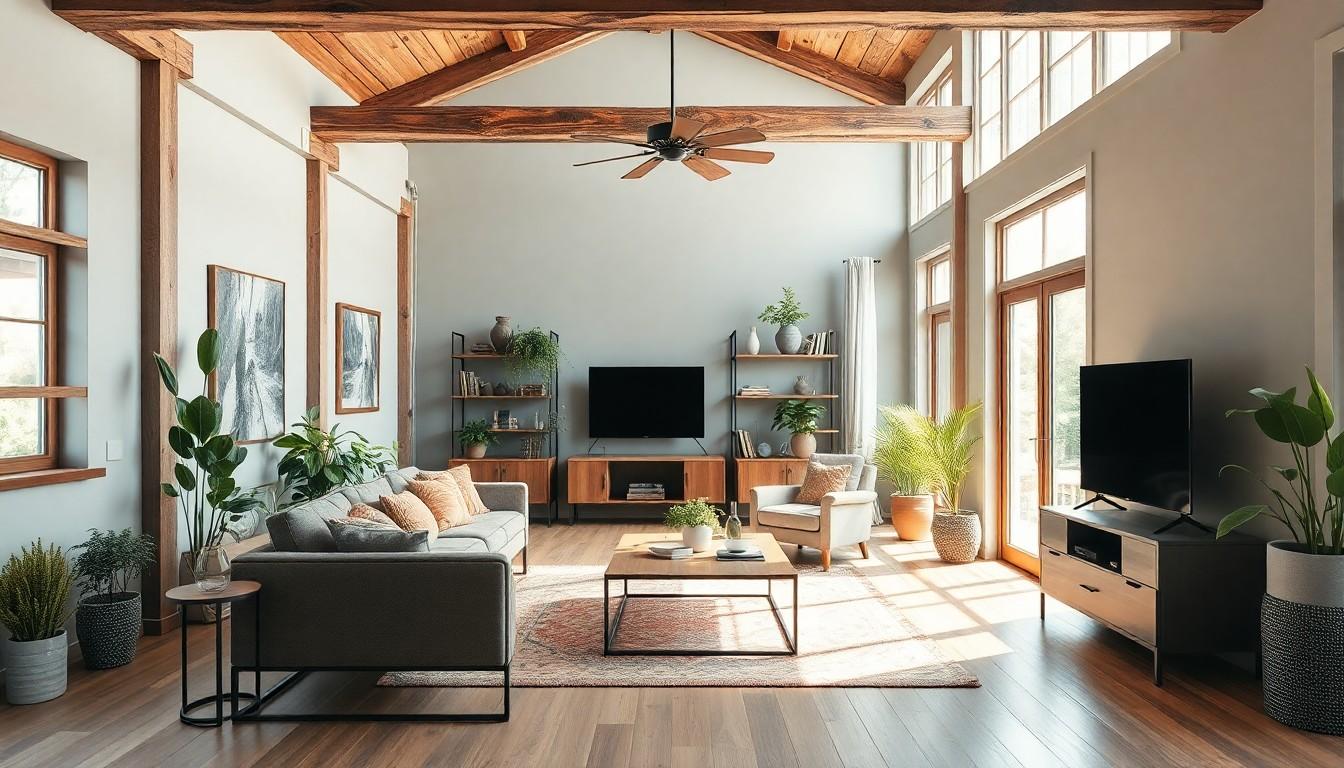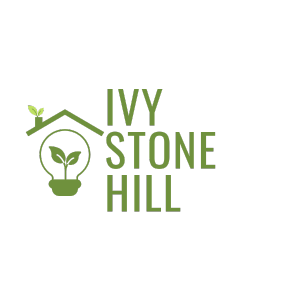In a world where saving the planet feels like a Herculean task, why not start with your own home? Eco-friendly renovations not only help Mother Earth but can also save some serious cash in the long run. Imagine sipping your morning coffee in a sunlit room that’s not just stylish but also sustainable. Sounds dreamy, right?
From energy-efficient appliances to repurposed materials, the possibilities are endless. It’s time to give your home a makeover that not only looks good but feels good too. So grab your tool belt and let’s explore the top eco-friendly home renovation ideas that’ll turn your space into a green oasis. After all, who said saving the planet couldn’t be a little fun?
what are the top eco-friendly home renovation ideas?
Choosing eco-friendly home renovation ideas enhances both sustainability and aesthetic appeal. Incorporating energy-efficient appliances reduces utility bills and minimizes energy consumption. Installing solar panels harnesses renewable energy, dramatically decreasing dependency on fossil fuels.
Using reclaimed materials for construction or decor adds character while conserving resources. Opting for low-VOC paints improves indoor air quality, making spaces healthier. Replacing traditional windows with double-glazed varieties increases insulation, boosting energy efficiency.
Implementing rainwater harvesting systems can supply water for irrigation and non-potable uses. Planting native landscaping reduces the need for irrigation and fosters local biodiversity. Incorporating smart home technology helps manage energy use more effectively.
Installing green roofs contributes to better insulation and enhances stormwater management. Upgrading to high-efficiency HVAC systems can significantly lower energy usage. Choosing sustainable flooring options, like bamboo or cork, supports eco-friendly practices and offers durability.
Using energy-efficient lighting, such as LED bulbs, reduces electricity consumption while providing excellent brightness. Installing programmable thermostats ensures optimal heating and cooling based on daily schedules. Utilizing natural lighting through skylights or larger windows can decrease reliance on artificial light sources.
Promoting sustainable practices during a renovation not only benefits the environment but creates a healthier living space. These eco-friendly renovation ideas inspire creativity and contribute to a greener future.
Sustainable Materials

Utilizing sustainable materials significantly enhances eco-friendly home renovations. These materials reduce the environmental impact while promoting healthier living spaces.
Recycled Building Materials
Recycled building materials play a crucial role in sustainable renovations. Reclaimed wood, for example, not only adds character but also minimizes deforestation. Many homeowners opt for recycled metal and glass as well, which lowers waste sent to landfills. These materials effectively reduce the carbon footprint of construction projects. Besides being environmentally friendly, they often come at a lower cost compared to new materials.
Eco-Friendly Paints and Finishes
Eco-friendly paints and finishes contribute to healthier indoor air quality. Low-VOC (volatile organic compounds) paints release fewer harmful emissions than traditional options. Many brands offer a wide range of colors that maintain aesthetics while prioritizing sustainability. Natural finishes, such as those derived from plant oils, provide durable surfaces without toxic chemicals. Selecting these products allows homeowners to beautify spaces while ensuring safety for their families and the environment.
Energy Efficiency Upgrades
Energy efficiency upgrades significantly enhance a home’s sustainability. These improvements lead to reduced energy consumption and lower utility bills.
High-Efficiency Windows
High-efficiency windows play a crucial role in energy savings. They reduce heat loss in winter and keep interiors cool during summer months. Low-emissivity coatings minimize UV radiation and glare, improving indoor comfort. Double or triple glazing increases insulation, while airtight frames prevent drafts. Selecting Energy Star-rated windows ensures optimal performance, leading to long-term savings on heating and cooling costs.
Insulation Improvements
Insulation improvements enhance a home’s energy efficiency by creating a barrier against heat transfer. Upgrading to spray foam or cellulose insulation improves temperature control and reduces energy consumption. Air sealing around doors, windows, and attics prevents air leaks, maximizing the effectiveness of insulation materials. R-value, a measure of thermal resistance, determines insulation efficiency; higher values indicate better performance. Cost savings associated with better insulation become apparent through decreased energy bills over time.
Water Conservation Techniques
Implementing water conservation techniques in home renovations significantly reduces water usage. These efforts not only lead to lower water bills but also contribute to broader sustainability goals.
Low-Flow Fixtures
Installing low-flow fixtures is a practical method to conserve water. Showerheads and faucets with low-flow technology reduce water flow without sacrificing pressure. They can cut water consumption by 20% or more, helping homeowners save significantly on utility costs. Toilets equipped with dual-flush options allow users to select between low and high water volumes depending on the waste. Encouraging everyone to adopt low-flow options promotes a greater culture of water efficiency.
Rainwater Harvesting Systems
Rainwater harvesting systems collect and store rainwater for various household uses. These systems divert runoff from roofs into barrels or cisterns, making water readily available for irrigation and even non-potable applications. A residential system can save thousands of gallons annually, particularly in regions with significant rainfall. Installing a rainwater system decreases reliance on municipal water sources and enhances water security during dry spells. Communities benefit from these systems as they help reduce stormwater runoff and the associated water pollution.
Landscaping with Nature
Landscaping with nature enhances the aesthetic and ecological value of any home. Integrating natural elements promotes sustainability, reduces maintenance, and supports local ecosystems.
Native Plants and Xeriscaping
Native plants require minimal water and care, making them ideal for eco-friendly landscaping. They support local wildlife, including pollinators such as bees and butterflies. Xeriscaping focuses on designing landscapes that conserve water. By using drought-resistant plants, homeowners can reduce irrigation needs and lower water bills. A well-planned native garden creates vibrant colors and textures, contributing to a visually appealing environment while promoting biodiversity.
Solar Energy Solutions
Utilizing solar energy transforms landscaping into a sustainable powerhouse. Solar panels can integrate seamlessly into gardens, providing renewable energy for homes. Installing solar-powered lights enhances outdoor spaces while reducing electricity consumption. Homeowners can opt for solar water heaters, which minimize energy use for heating water. By harnessing sunlight, landscapes become energy-efficient and environmentally friendly, offering long-term savings and promoting a greener lifestyle.
Healthier home and a more sustainable future
Embracing eco-friendly home renovations opens the door to a more sustainable lifestyle. By integrating energy-efficient appliances and sustainable materials, homeowners can create spaces that are both stylish and environmentally responsible. The journey toward a greener home is not just beneficial for the planet; it also leads to significant long-term savings.
As they explore options like rainwater harvesting and native landscaping, individuals can enhance their living environments while contributing to ecological balance. Each small change adds up, fostering a healthier home and a more sustainable future. The possibilities are endless, and the impact is profound.

